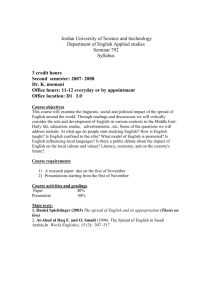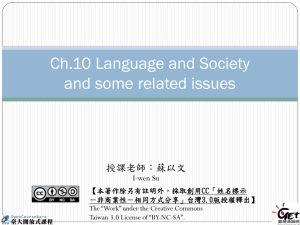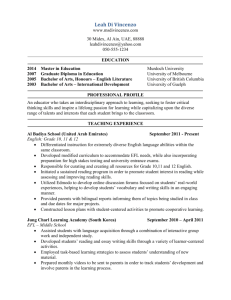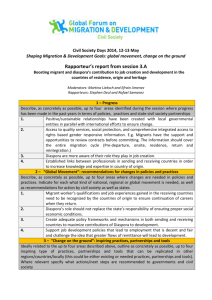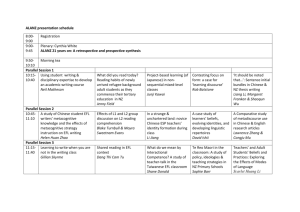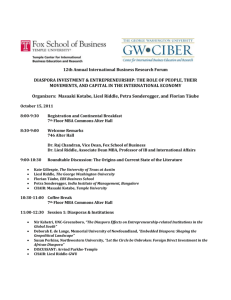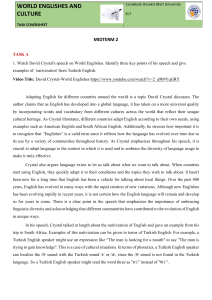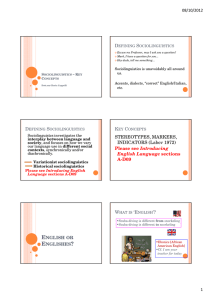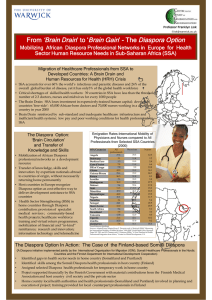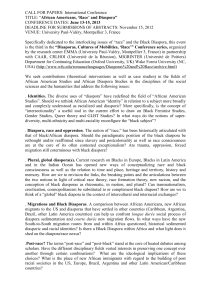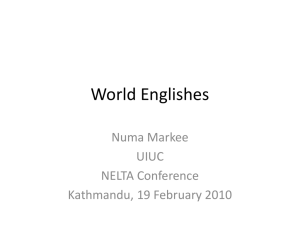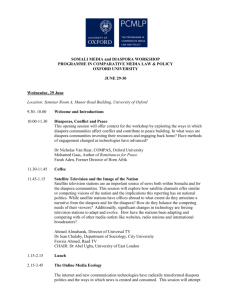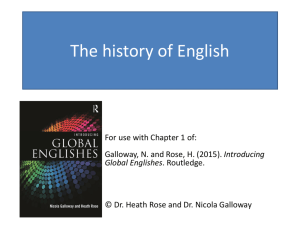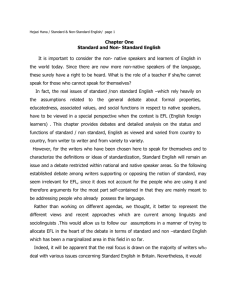Topics of English / Language Killers - Tim Burry
advertisement
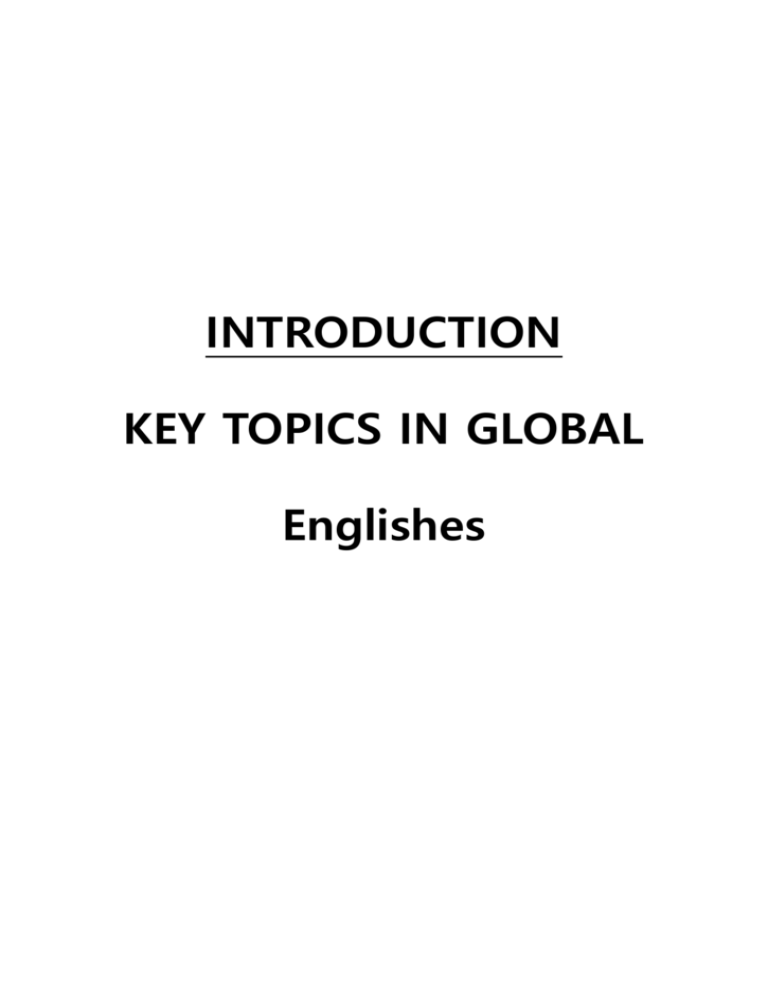
INTRODUCTION KEY TOPICS IN GLOBAL Englishes As of 2014, How many people in the world speak English? The total number is 430 million but this does not give a complete picture. For many countries, no numbers are available. And in others (notably India, Pakistan, Nigeria, Ghana, Malaysia , Philippines and Tanzania, which had a combined total of over 1,462 million people in 2002) even a small percentage increase in the number of speakers thought to have a reasonable (rather than a fluent) command of English would considerably expand the L2 grand total. Focus questions English as a killer language, Why? 1. How many languages are there in the world today? 2. At what rate are they dying off? 3. How many of the world’s languages are spoken by fewer than 1,000 people? 4. How many indigenous, (Original or Native) languages are there in North America? 5. Why has English become a global language? 6. Many people in Africa use English but other people use other languages. Why? 7. Why do the numbers of people who know English vary so much? 8. Why is English a world language? 9. What is the difference between an accent and a dialect? 10. Why do some countries spell colour or other countries color? 11. Why and how are new words formed? 12. What is Standard English? DIALECT: a form of a language that is spoken in a particular area and that uses some of its own words, grammar, and pronunciations. ACCENT: to give special attention to (something) OR : to say (part of a word) with greater stress or force. Recent estimates of the number of languages in the world vary between 3,000 and 10,000, but by most definitions of a ‘language’ the figure lies between 6,000 and 7,000. Over the next century, something like two languages will die each month. A quarter of the world’s languages are spoken by fewer than 1000 people. Though estimates vary, there may still be close to 200 indigenous, (Original) languages in use in North America. (Grenoble and Whaley’s Endangered Languages (1998): The two dispersals of English We can speak of the two dispersals, or diasporas, of English. The first diaspora, initially involving the migration of around 25,000 people from the south and east of England primarily to North America and Australia, resulted in new mother tongue varieties of English. The second diaspora, involving the colonisation of Asia and Africa , led, on the other hand, to the development of a number of second language varieties, often referred to as ‘New Englishes’. This is to some extent a simplification for it is not always an easy matter to categorize the world’s Englishes so neatly (see A3 ). And, as was noted above, the whole issue has been further complicated since the twentieth century by the dramatic increase in the use of English first as a foreign language and subsequently as an international lingua franca (respectively EFL and ELF). The first diaspora includes people who Migrated to N. America, Australia, New Zealand USA/ Canada: From early 17th century (English), 18th (L1 variety) The second diaspora includes people who migrated to Africa and Asia → L2 varieties of English. South Africa: (Afrikaans/ Blacks/ from 1860s Indians). South Asia: India, Bangladesh, Pakistan, Sri Lanka, Nepal, Bhutan, from 1600 (British East India Company). 1765– 1947 British India. SE Asia and S Pacific: Singapore, Malaysia, Hong Kong, Philippines from late 18th century Colonial Africa: West: Sierra Leone, Ghana, Gambia, Nigeria, Cameroon, Liberia, from late 15th century WHO SPEAKS ENGLISH TODAY? There are different English language categories. ENL, ESL, EFL, and ELF. The spread of English around the world is often discussed in terms of three distinct groups of users, those who speak English ENL – A native language, ESL - A second language, EFL - A foreign language.

